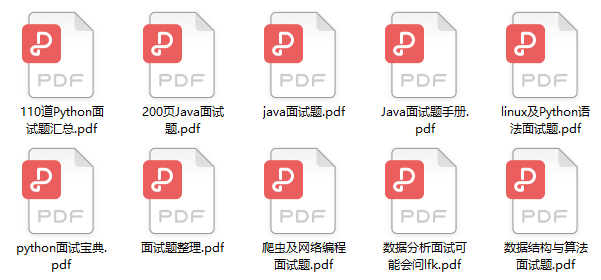用Stream来优化老代码,瞬间干净优雅了!
源码共读
共 13834字,需浏览 28分钟
·
2022-01-09 18:41
来源丨Java技术江湖
Java8 的新特性主要是 Lambda 表达式和流,当流和 Lambda 表达式结合起来一起使用时,因为流申明式处理数据集合的特点,可以让代码变得简洁易读。
01 流如何简化代码
-
筛选出卡路里小于 400 的菜肴 -
对筛选出的菜肴进行一个排序 -
获取排序后菜肴的名字
Dish.java(菜肴)
public class Dish {
private String name;
private boolean vegetarian;
private int calories;
private Type type;
// getter and setter
}
private List<String> beforeJava7(List<Dish> dishList) {
List<Dish> lowCaloricDishes = new ArrayList<>();
//1.筛选出卡路里小于400的菜肴
for (Dish dish : dishList) {
if (dish.getCalories() < 400) {
lowCaloricDishes.add(dish);
}
}
//2.对筛选出的菜肴进行排序
Collections.sort(lowCaloricDishes, new Comparator<Dish>() {
@Override
public int compare(Dish o1, Dish o2) {
return Integer.compare(o1.getCalories(), o2.getCalories());
}
});
//3.获取排序后菜肴的名字
List<String> lowCaloricDishesName = new ArrayList<>();
for (Dish d : lowCaloricDishes) {
lowCaloricDishesName.add(d.getName());
}
return lowCaloricDishesName;
}
private List<String> afterJava8(List<Dish> dishList) {
return dishList.stream()
.filter(d -> d.getCalories() < 400) //筛选出卡路里小于400的菜肴
.sorted(comparing(Dish::getCalories)) //根据卡路里进行排序
.map(Dish::getName) //提取菜肴名称
.collect(Collectors.toList()); //转换为List
}
对数据库查询到的菜肴根据菜肴种类进行分类,返回一个 Map<Type, List>的结果
private static Map<Type, List<Dish>> beforeJDK8(List<Dish> dishList) {
Map<Type, List<Dish>> result = new HashMap<>();
for (Dish dish : dishList) {
//不存在则初始化
if (result.get(dish.getType())==null) {
List<Dish> dishes = new ArrayList<>();
dishes.add(dish);
result.put(dish.getType(), dishes);
} else {
//存在则追加
result.get(dish.getType()).add(dish);
}
}
return result;
}
private static Map<Type, List<Dish>> afterJDK8(List<Dish> dishList) {
return dishList.stream().collect(groupingBy(Dish::getType));
}
02 什么是流
03 如何生成流
List<Integer> integerList = Arrays.asList(1, 2, 3, 4, 5);
Stream<Integer> stream = integerList.stream();
int[] intArr = new int[]{1, 2, 3, 4, 5};
IntStream stream = Arrays.stream(intArr);
Arrays.stream 方法生成流,并且该方法生成的流是数值流【即 IntStream 】而不是 Stream。补充一点使用数值流可以避免计算过程中拆箱装箱,提高性能。
mapToInt、mapToDouble、mapToLong三种方式将对象流【即 Stream】转换成对应的数值流,同时提供了 boxed 方法将数值流转换为对象流
Stream<Integer> stream = Stream.of(1, 2, 3, 4, 5);
of 方法生成流,通过 Stream 的 empty 方法可以生成一个空流
Stream<String> lines = Files.lines(Paths.get("data.txt"), Charset.defaultCharset())
Stream<Integer> stream = Stream.iterate(0, n -> n + 2).limit(5);
Stream<Double> stream = Stream.generate(Math::random).limit(5);
04 流的操作类型
中间操作
filter、map 等
终端操作
count、collect 等
05 流使用
中间操作
List<Integer> integerList = Arrays.asList(1, 1, 2, 3, 4, 5);
Stream<Integer> stream = integerList.stream().filter(i -> i > 3);
filter 方法进行条件筛选,filter 的方法参数为一个条件
List<Integer> integerList = Arrays.asList(1, 1, 2, 3, 4, 5);
Stream<Integer> stream = integerList.stream().distinct();
distinct 方法快速去除重复的元素
List<Integer> integerList = Arrays.asList(1, 1, 2, 3, 4, 5);
Stream<Integer> stream = integerList.stream().limit(3);
limit 方法指定返回流的个数,limit 的参数值必须 >=0,否则将会抛出异常
List<Integer> integerList = Arrays.asList(1, 1, 2, 3, 4, 5);
Stream<Integer> stream = integerList.stream().skip(2);
skip 方法跳过流中的元素,上述例子跳过前两个元素,所以打印结果为 2,3,4,5,skip 的参数值必须 >=0,否则将会抛出异常
List<String> stringList = Arrays.asList("Java 8", "Lambdas", "In", "Action");
Stream<Integer> stream = stringList.stream().map(String::length);
复制代码
map 方法可以完成映射,该例子完成中 String -> Integer 的映射,之前上面的例子通过 map 方法完成了 Dish->String 的映射
List<String> wordList = Arrays.asList("Hello", "World");
List<String> strList = wordList.stream()
.map(w -> w.split(" "))
.flatMap(Arrays::stream)
.distinct()
.collect(Collectors.toList());
map(w -> w.split(" ")) 的返回值为 Stream<String[]>,我们想获取 Stream,可以通过 flatMap 方法完成 Stream ->Stream 的转换
allMatch 匹配所有
List<Integer> integerList = Arrays.asList(1, 2, 3, 4, 5);
if (integerList.stream().allMatch(i -> i > 3)) {
System.out.println("值都大于3");
}
anyMatch 匹配其中一个
List<Integer> integerList = Arrays.asList(1, 2, 3, 4, 5);
if (integerList.stream().anyMatch(i -> i > 3)) {
System.out.println("存在大于3的值");
}
for (Integer i : integerList) {
if (i > 3) {
System.out.println("存在大于3的值");
break;
}
}
noneMatch 全部不匹配
List<Integer> integerList = Arrays.asList(1, 2, 3, 4, 5);
if (integerList.stream().noneMatch(i -> i > 3)) {
System.out.println("值都小于3");
}
终端操作
count
List<Integer> integerList = Arrays.asList(1, 2, 3, 4, 5);
Long result = integerList.stream().count();
List<Integer> integerList = Arrays.asList(1, 2, 3, 4, 5);
Long result = integerList.stream().collect(counting());
findFirst 查找第一个
//查找到第一个大于 3 的元素并打印
List<Integer> integerList = Arrays.asList(1, 2, 3, 4, 5);
Optional<Integer> result = integerList.stream().filter(i -> i > 3).findFirst();
findAny 随机查找一个
List<Integer> integerList = Arrays.asList(1, 2, 3, 4, 5);
Optional<Integer> result = integerList.stream().filter(i -> i > 3).findAny();
findAny 方法查找到其中一个大于三的元素并打印,因为内部进行优化的原因,当找到第一个满足大于三的元素时就结束,该方法结果和 findFirst 方法结果一样。提供 findAny 方法是为了更好的利用并行流,findFirst 方法在并行上限制更多
int sum = 0;
for (int i : integerList) {
sum += i;
}
reduce 进行处理
int sum = integerList.stream().reduce(0, (a, b) -> (a + b));
int sum = integerList.stream().reduce(0, Integer::sum);
reduce 接受两个参数,一个初始值这里是 0,一个 BinaryOperator accumulator 来将两个元素结合起来产生一个新值,
Optional<Integer> min = menu.stream().map(Dish::getCalories).min(Integer::compareTo);
Optional<Integer> max = menu.stream().map(Dish::getCalories).max(Integer::compareTo);
OptionalInt min = menu.stream().mapToInt(Dish::getCalories).min();
OptionalInt max = menu.stream().mapToInt(Dish::getCalories).max();
min 获取流中最小值,max 获取流中最大值,方法参数为 Comparator<? super T> comparator
Optional<Integer> min = menu.stream().map(Dish::getCalories).collect(minBy(Integer::compareTo));
Optional<Integer> max = menu.stream().map(Dish::getCalories).collect(maxBy(Integer::compareTo));
minBy 获取流中最小值,maxBy 获取流中最大值,方法参数为 Comparator<? super T> comparator
reduce 获取最小最大值
Optional<Integer> min = menu.stream().map(Dish::getCalories).reduce(Integer::min);
Optional<Integer> max = menu.stream().map(Dish::getCalories).reduce(Integer::max);
复制代码
07 总结
-End-
最近有一些小伙伴,让我帮忙找一些 面试题 资料,于是我翻遍了收藏的 5T 资料后,汇总整理出来,可以说是程序员面试必备!所有资料都整理到网盘了,欢迎下载!

面试题】即可获取
评论
